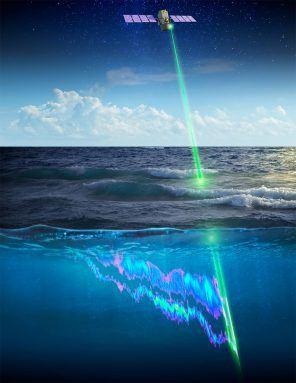NASA's Space Laser Is Used To Study Phytoplankton
NASA has a laser inside a satellite orbiting the Earth and the laser is being used to study the boom-and-bust cycle of polar ocean plants. Specifically the laser is being used to study the peak and decline cycles of phytoplankton in the ocean. NASA says that its findings will supply data for ecosystem management, commercial fisheries, and help our understanding of the climate and key ocean ecosystems.
"It's really important for us to understand what controls these boom-and-bust cycles, and how they might change in the future so we can better evaluate the implications on all other parts of the food web," said Michael Behrenfeld, a marine plankton expert at Oregon State University in Corvallis.

The reason for studying the phytoplankton is because it has influence on the carbon cycle of the Earth. The plankton absorbs a great deal of the carbon dioxide dissolved in the upper ocean as part of photosynthesis. This absorption is vital to life on earth and reduced the amount of carbon dioxide in the atmosphere.
Phytoplankton is the base of the ocean food chain with commercial fisheries, marine mammals, and birds depending on the phytoplankton blooms. The laser is the Cloud-Aerosol Lidar with Orthogonal Polarization or CALIOP and it is aboard the Cloud-Aerosol Lidar and Infrared Pathfinder Satellite Observation or CALIPSO satellite that launched in 2006. The instrument has been used to monitor plankton in the polar regions from 2006 to 2015.
"CALIOP was a game-changer in our thinking about ocean remote sensing from space," said Chris Hostetler, a research scientist at Langley. "We were able to study the workings of the high-latitude ocean ecosystem during times of year when we were previously completely blind."
The NASA study has shown that accelerations in plankton growth rates allowing the phytoplankton to outgrow the animals that prey on the, when that happens the phytoplankton populations rapidly increase.
SOURCE: NASA
